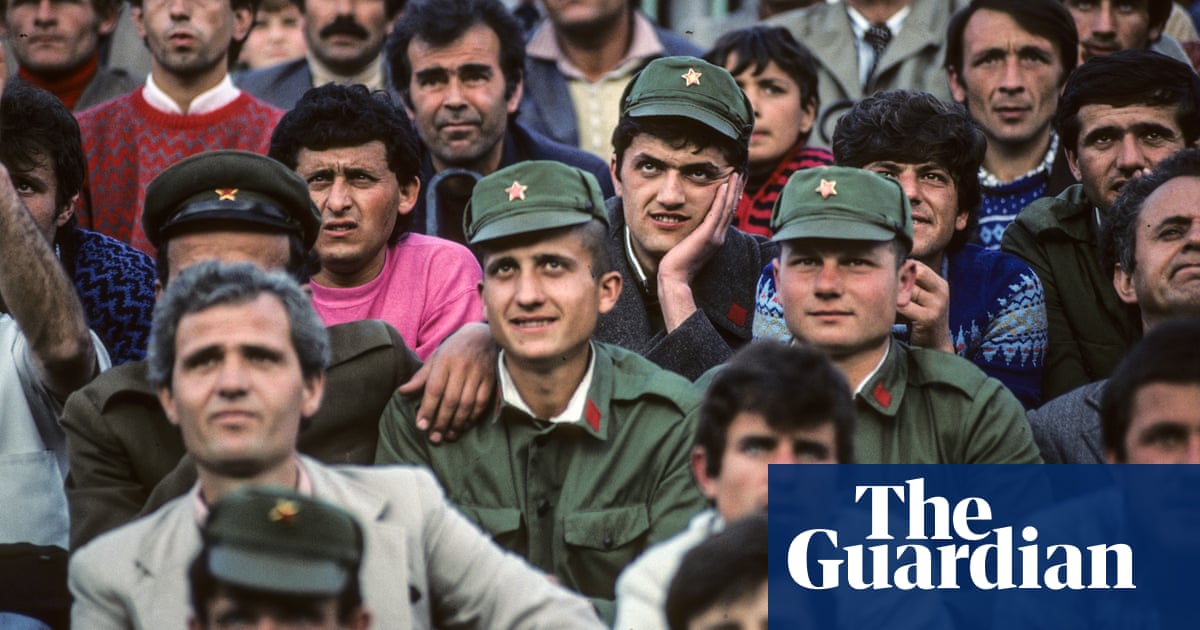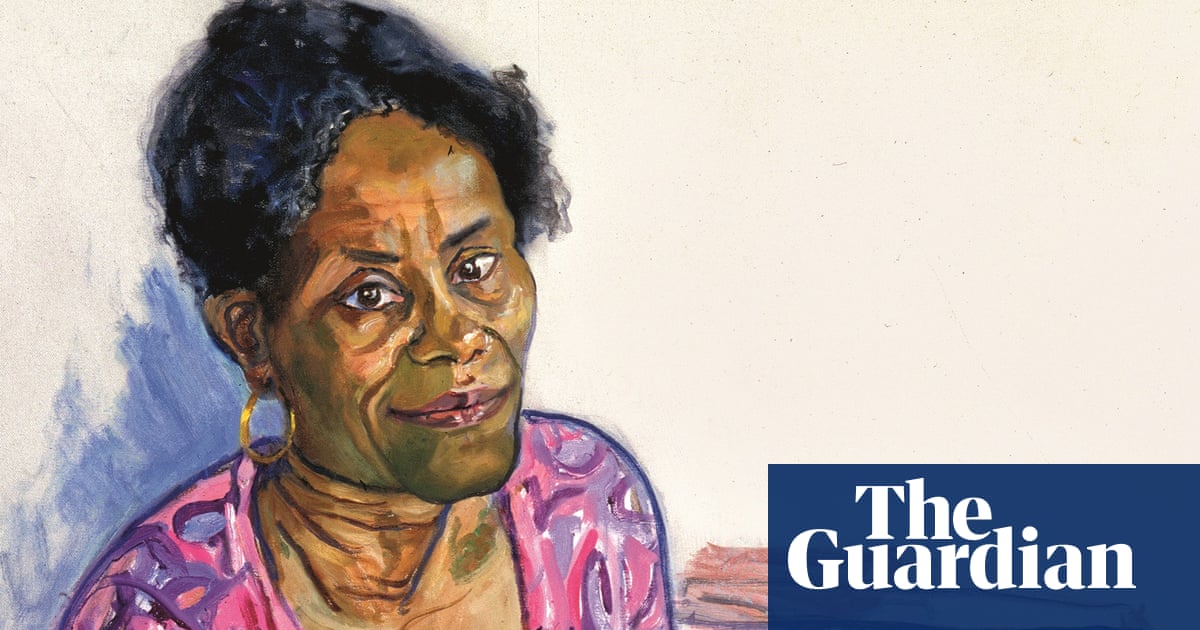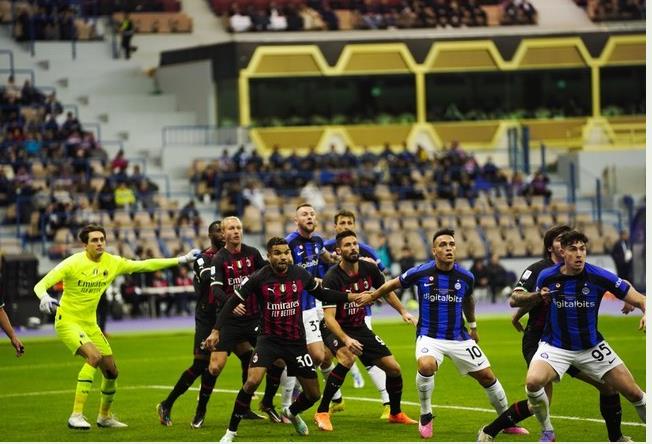
Football in Albania is a national obsession. Yet between the late 1960s and Stalinism’s slow, lingering death in 1991, it became more than mere fixation. In a country where the 1967 rewriting of the constitution denied people their freedom of faith, football became the new religion, with pilgrims from Gjirokastër to Shkodër, Lezhë to Sarandë, filling stadiums every Sunday afternoon in worship of their new, auxiliary gods.
In those moments of ordered chaos, Albanians appeared free from the trials and injustices of their moribund, regime-subscribed lives, transported – via the vehicles of football and shared human experience – to a higher plain; a vista of harmony and liberty.
For the well-briefed football fan living in Tirana, preparations for matchday began on a Wednesday afternoon.
At 5pm, Monday to Saturday, Skanderbeg Square ebbed and flowed with a tide of human traffic as the workers of Albania departed their city jobs as functionaries of the regime, making their short walks – or bicycle rides – via the tree-lined boulevards of inner Tirana, to their Soviet-built prefab apartments on the outskirts of the town.
There were no cars back then, aside from the funereal trundle of the black-windowed state vehicles dispatching dignitaries to their Party offices, or the intemperate growl of GAZ-69 trucks on their daily munitions runs. Buses were few; taxis non-existent.
Wednesday, bi-monthly, was payday. After receiving remuneration for the hours invested in performing their bit-part roles in the realisation of Enver Hoxha’s socialist dream, the workers of Albania would – as is ritual in all societies – spend.
Avenues for the expression of self-enjoyment were limited; a packet of cigarettes, a magazine of choice maybe, but for the avid sports fan in Albania’s biggest city, payday was usually preceded by a visit to Gimi’s kiosk, a short distance from Sheshi Skënderbej – Skanderbeg Square – beneath the shadow of Ushtari i panjohur, the Unknown Soldier.
Gimi, a partisan from the days of the revolution, ran a vertical, oblong metal kiosk – roughly the size of a standard telephone booth. Embossed with the words Gazeta Revista – newspapers, magazines – the kiosk sold the national broadsheet Zeri i Popullit and recreational periodicals but for sports fans in the know it also served as a government-approved ticket office for the Albanian Football Federation.
Football became an essential social release for the Albanian male, particularly, and stadiums – without exception – were full, with the majority of fans obtaining their tickets from Gimi days in advance. It was common for a supporter to block buy, usually five tickets at a time: three for the buyer plus friends, two to “flip” on matchday – generally with the addition of a five Lek commission. Free enterprise, albeit on a minute scale, was still alive in Stalinist Albania. You just had to ensure you didn’t get caught.
Tickets were generally available for the three sections of the stadium: behind the goals and one pitchside stand, with the remaining stand – the Tribuna – a covered area, exclusively reserved for army, police, and Party members.
The wooden-benched stands occupied by the proletariat were called njëzet – 20 – as tickets cost 20 Lek. In the njëzet, seat rows and numbers were disregarded, the pre-match tussle for the best seats a weekly act of putative anarchy. In the regimented environs of Stalinist Albania, with all its rules and restrictions, nobody ever bought into the concept of queueing.
The only place seat numbers were observed was in the Tribuna. From the njëzet, the workers could watch the Tribuna occupants: virtuous, upstanding ambassadors of The Party, attired in their good coats and Italian shoes, protected from the elements by the overhead canopy; the echoed promises of Hoxha’s fair, classless society dissolving in the enveloping wind and rain.
For those imprudent enough not to buy tickets pre-matchday, there ensued a mandatory Sunday scramble for the remaining cache available via the small hatch at Gimi’s kiosk.
The scenes resembled opening hours at the New York Stock Exchange. In Stalinist Albania, where public discord was well-nigh absent, fights regularly occurred in the sheshi as in excess of 1,000 fans clambered for the weekly privilege of watching their footballing heroes in action.
Arrests happened, but not as regularly as you would expect, the Sigurimi (Albanian secret police) choosing to turn a blind eye to non-ideologically motivated acts of mob misconduct.
Those unsuccessful in their match-day quest for tickets would have to try their luck at Tirana’s only other vendors: the tiny portholes in the wall, under the staircase at Stadiumi Dinamo or Stadiumi Qemal Stafa.
Come Sunday, Tirana came alive; a palpable buzz of collective excitement encompassing the city. Fans would congregate in Skanderbeg Square hours prior to the 3pm kick-off to smoke cigarettes and speculate on the outcome of the day’s game.
But how did games look during these dark, oblique times? My friend Irvin told me: “Although the pitches were shit the football was beautiful, highly competitive, full of quality, intelligence and skill. And the atmosphere was always amazing; we practically lived for the weekend. It was the only 90 minutes of the week that people could be themselves; forget about life and everything else, and scream and sing their hearts out.”
Joy, however, was always tempered with caution, as a stray, adverse comment could carry dire consequences. “If you made a negative remark about the government, a spy in the crowd would call a Sigurimi agent who would intervene,” Irvin said.
Goals were celebrated euphorically. “The coffee shops and bars on Elbasani Street would donate a few till rolls or toilet rolls, or fans would cut up newspapers into confetti to throw when their team scored. But the most imaginative form of celebration was pigeons. Every household in Albania keeps racing pigeons to this day, and many fans would attach ribbons in their team colours to the pigeons’ ankles and release them at the stadium. They would be waiting for you in their pigeon loft on your arrival home.”
Fans would tune into the goings-on at grounds around the country by taking the Albanian-made, silver lozenge-shaped transistor radios – about the size of a house brick – to games; primitive contraptions with long antennae that stuck out like duelling swords threatening to injure unexpectant, neighbouring fans. In the video archives of the era, you can visibly see a legion of upright spokes glistening in the mid-afternoon sunshine.
Word of developments in other games in other cities and towns would quickly pass around the stadium; small pockets of celebration an indication that a rival team had conceded a goal in some far-flung municipality.
Few Albanians knew of football outside of the country’s hermetically sealed borders. Some whispered knowledge of Yugoslavian and Italian football existed, homemade antennae fashioned from sardine or shoe-shine cans offering insight into a world beyond the bunkers and the barbed wire. Match-day in Albania captured the latent spirit of a people who’d become accustomed to doing what they were told. Children of a republic who, once a week, were allowed to come out to play, to be a genuine version of themselves. And it happened every given Sunday.












